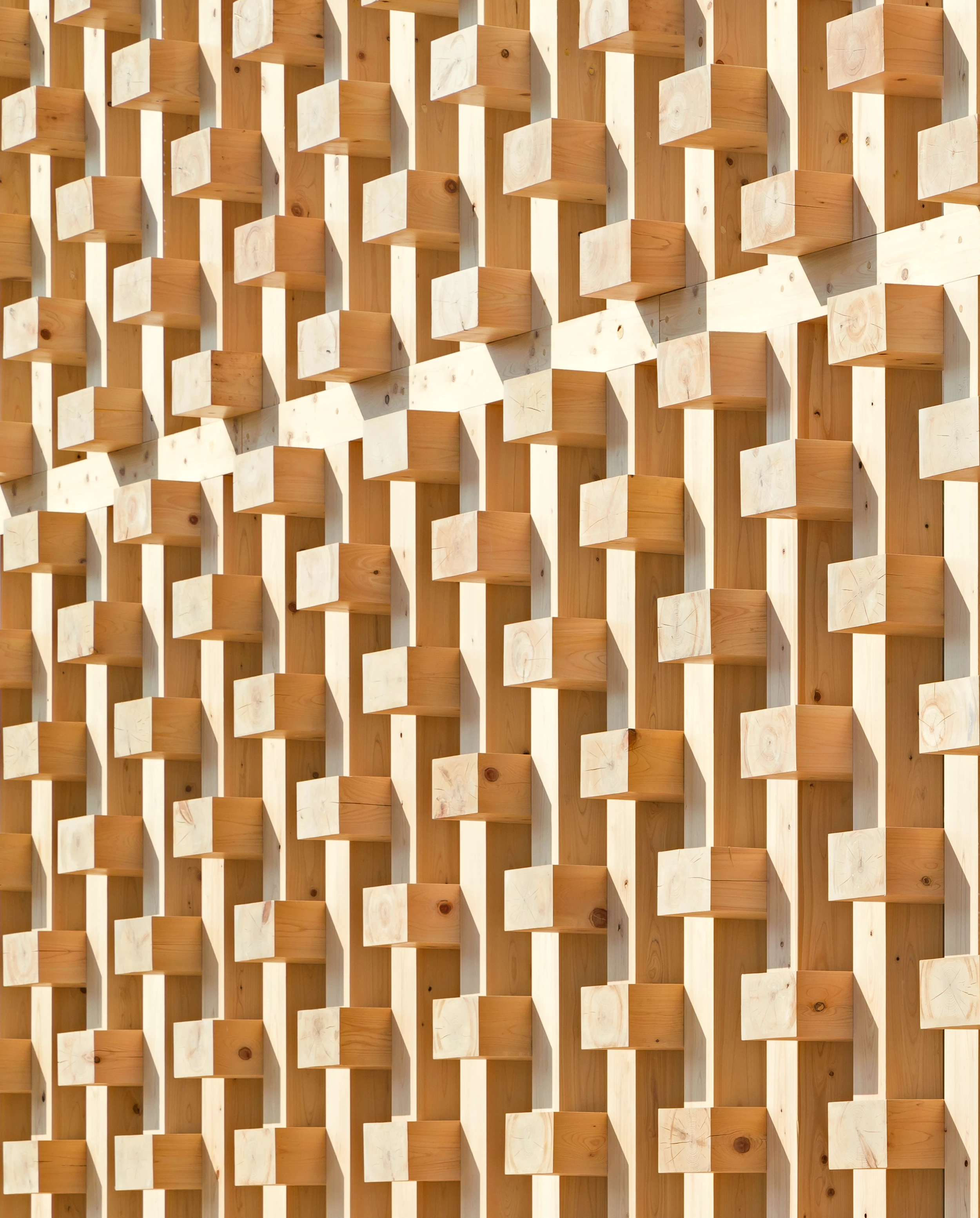
Monumental or minuscule, the oeuvre of Kengo Kuma could be described as pixelated craftsmanship. Its creative explosion, encompassing all scales and extending over four continents, is governed by a devotion to the material rigor of construction and to the dimensional precision of the elements, which are carefully assembled to form facades woven like tapestries. From the colossal New National Stadium in Tokyo, which will become the symbol of contemporary Japan after the Olympic Games of 2020, to the smallest and most ephemeral pavilion, the design process divides the building into components, shaping these with exquisite formal discipline, and joining them under the guide of geometry and construction. Piece by piece, the tactile perfume of craftsmanship is diluted in the repeated and rhythmical musicality of the elements, and the solidity of matter is blurred in the pixelation of the surfaces.
Paraphrasing the writer Haruki Murakami, who has discussed his two passions in two essays, What I Talk About When I Talk About Running and What I Talk About When I Talk About Writing, his friend the architect Kengo Kuma could ask ‘What I Talk About When I Talk About Building,’ and it is fair to imagine that he would answer mentioning his love of nature and his devotion for life, which make his works vibrate with light and resonate with landscape while they serve as stages for both large collective encounters and for the intimate choreography of daily life. Quintessentially Japanese in his respect for the poetic dimension of materials and his desire to blend with the lyrical vegetation of gardens, Kuma builds spaces where the somber gravity of mass becomes luminous penumbra, ruled by the striped patterns of constructive order or otherwise dotted with the modular fragmentation of the elements.
Now a large studio established at the two ends of Eurasia, the architecture produced both in the Tokyo headquarters and in the office set up ten years ago in Paris preserves the distinctive features that made Kuma’s attitude and work unique from the start: the extreme bareness and strict material and geometric discipline that turned his works into redoubts of silence, when everything around is clatter, and this with a visual elegance that makes the constructions more ethereal the more earthly material they are. These are works that seem to fade in the mist when they appear to invite touch, and whose communion with nature does not exclude attention to social use, because aesthetic emotion is based on the sturdy columns of functional logic and technical proficiency: in the work of Kuma, the tireless exploration of uncharted paths is always based on the firm support of well-trodden experience.






